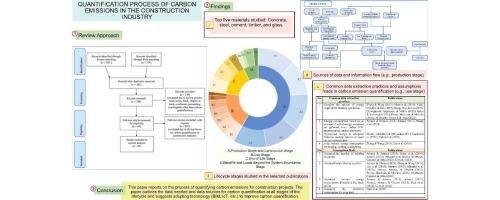A groundbreaking device developed by researchers at the University of Tokyo in collaboration with industry engineers has revolutionized how we measure carbon dioxide captured in concrete. The concrete thermal gravimetry and gas analyzer, a boxlike apparatus, offers an elegant solution to a persistent challenge facing the construction industry. Scientists can now quantify greenhouse gases in building materials with enhanced precision and diminished time requirements.
Concrete, that ubiquitous structural foundation of modern civilization, harbors carbon dioxide within its molecular framework. The novel measurement approach heats concrete specimens to a scorching 980 degrees Celsius. This thermal exposure induces the release of entrapped gases from the block, including carbon dioxide, which researchers then evaluate with sophisticated instruments. Professor Ippei Maruyama from the Department of Architecture at the University of Tokyo Graduate School of Engineering emphasized the distinctive capability of this method, noting that it determines “the amount of CO2 fixed in concrete or cementitious material without having to crush it”.
Traditional quantification techniques demanded a laborious process. Samples required pulverization into fine powder before analysis could commence. The innovative approach eliminates these cumbersome steps. Moreover, it curtails measurement duration to approximately one-third compared with existing protocols, thereby restricting the interval during which concrete might interact with atmospheric elements. The technological leap maintains accuracy even when carbon dioxide is distributed non-uniformly throughout the specimen.
The device emerged from cross-sector collaboration. While University of Tokyo researchers conceived the fundamental concept and component specifications, engineers at Rigaku Corp. undertook the actual development work. Subsequent verification involved researchers from both the university and Taiheiyo Consultants Co., Ltd. This partnership illustrates how academic-industrial alliances can foster practical solutions for environmental challenges.
Environmental Implications and Technical Foundations
The cement production process generates substantial carbon emissions. Industry stakeholders increasingly seek methods to offset these environmental impacts as part of global initiatives addressing greenhouse gas management. With concrete representing the second most consumed substance globally after water, accurate carbon measurement becomes pivotal for emissions tracking.
Determining CO2 uptake traditionally involves complex calculations. Researchers measure carbonation depth for specific concrete types under various exposure conditions, which enables estimation of carbonation rates. These rates, combined with exposed surface area data, allow calculation of carbonated concrete volume. By incorporating factors such as clinker content and carbonation degree, scientists can derive total carbon dioxide sequestration.
The new apparatus circumvents several complications confronting existing measurement techniques. Thermogravimetric analysis, while useful for general carbon dioxide detection within concrete, struggles to differentiate between various carbon sources accurately. Conversely, the thermal gravimetry and gas analyzer provides more precise discrimination of carbon origins.
The device’s functionality bears certain similarities to carbon analysis systems utilized in other research contexts. For instance, CarbonCure technologies has employed an Eltra CS800 carbon-sulfur analyzer for measuring carbon in concrete samples treated with injected CO2. Their protocol demands repeated testing if samples differ by more than 0.03%, highlighting the meticulous precision required for reliable carbon quantification.
What distinguishes the University of Tokyo’s approach is its streamlined workflow and non-destructive methodology. Whereas conventional strategies necessitate sample destruction through crushing, this innovation preserves the concrete’s structural integrity throughout the assessment process.
The implications extend beyond academic interest toward practical carbon trading applications. As construction firms pursue carbon neutrality goals, verifiable measurement becomes essential for credible offset claims. This device potentially facilitates more transparent carbon accounting within an industry responsible for significant global emissions.
One questioning aspect of the technology involves potential limitations in analyzing concrete with extremely low carbon concentrations. However this seems contradicted by the high temperature approach which should theoretically release even trace amounts of sequestered carbon dioxide.
The development represents a substantial stride forward in concrete carbon analysis. By simplifying procedure, enhancing accuracy, and decreasing time requirements, the concrete thermal gravimetry and gas analyzer equips researchers with valuable capabilities for greenhouse gas quantification in construction materials. Such advancements will prove increasingly pertinent as industry practitioners seek to diminish their environmental footprint while maintaining structural performance standards.







